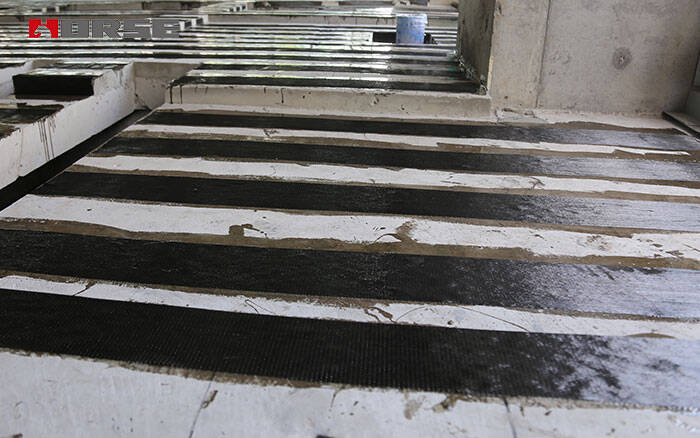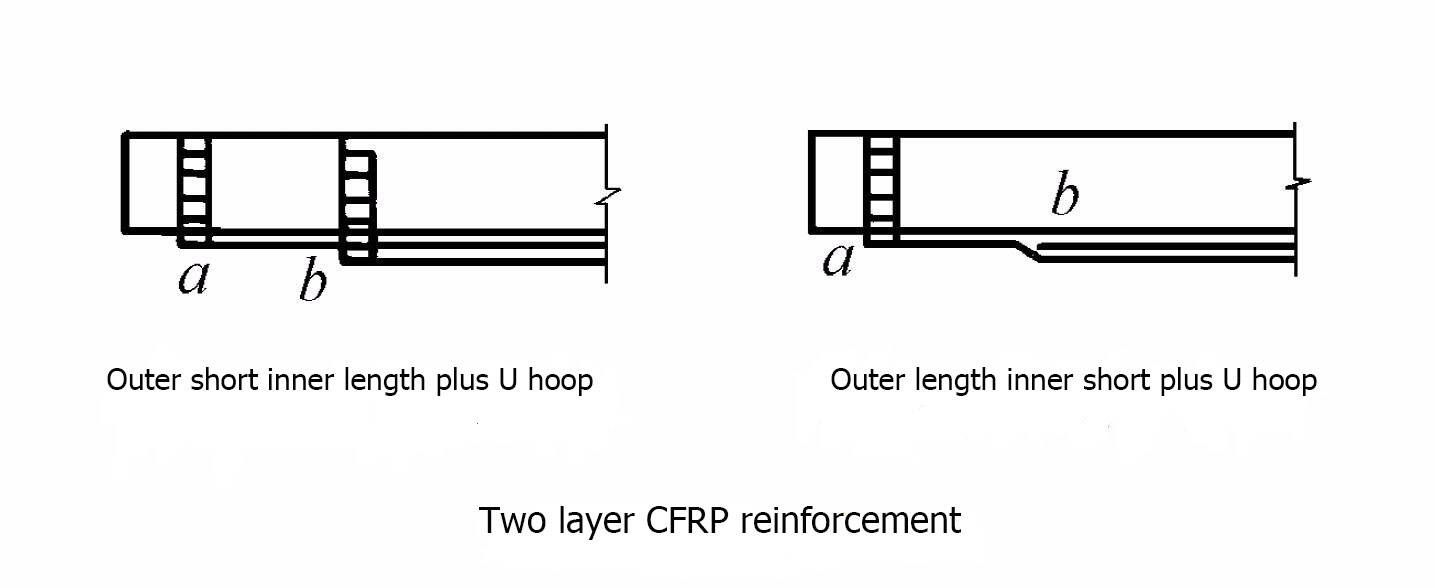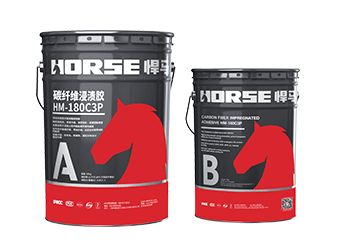Solutions
Horse Construction offers full range of structural strengthening materials with technical supports, documentation supports, products supports, project supports.
Compared with single-layer CFRP, double-layer CFRP bears higher tensile stress, so it needs higher performance colloid to ensure the overall force.

Carbon fiber reinforced polymer(CFRP) is a kind of high-quality building reinforcement material. Compared with conventional reinforcement methods, CFRP not only has high strength, light weight and small space occupation for the original structure, but also can be applied to complex and changeable building surface like fabric. After years of development, CFRP reinforcement technology has become one of the most widely used reinforcement methods in the reinforcement industry.
In concrete structures, CFRP is mainly used to strengthen the bearing capacity of flexural members, just like the reinforcement in the tensile zone of reinforced concrete structures. Carbon fiber fabric which meets the safety appraisal has a strength of 3400 MPa. However, in the actual design and construction, considering the influence of secondary forces and other factors, it will be impossible to meet the strength requirement by using only one layer of carbon fiber fabric, so it is necessary to adopt multi-layer carbon fiber fabric to reinforce.
The construction process of double carbon fiber fabric is more complicated than that of single fiber fabric. When double-layer carbon fiber fabric is pasted, the next layer should be pasted immediately before the first layer of carbon cloth impregnating adhesive reaches the finger-dry state. If the delay time exceeds 1 hour, it should wait 12 hours to re-apply the colloid on the first layer of carbon cloth for construction. At the same time, it is necessary to pay attention to the dust and other impurities affecting the adhesive effect before pasting.
Double-layer CFRP not only has strict requirements in construction, but also should be paid special attention to in structural measures. First of all, U-shaped stirrups at the end of carbon fabric play an important role in double-layer carbon fiber cloth. Concrete beams are deformed under bending, and the deformation of beams and fiber fabric should be coordinated. Therefore, tensile stress will occur between the bottom of concrete beam and glue, glue and carbon fiber fabric, which will easily lead to end peeling failure, especially for multi-layer carbon fabric. The use of U hoop at the end will restrain the carbon fabric and reduce the possibility of peeling.

In addition, in order to ensure the anchorage capacity of the end of the double-layer carbon fabric, the layered cutting of the carbon fiber fabric is a more reasonable reinforcement method. In the reinforcement of double-layer carbon fabric, there are two kinds of layered truncation measures, namely, the outer short inner long and the inner short outer long. The effect between the two can be judged from the following aspects:
Force transfer path: the force of carbon fibers at the b-end of the outer short and inner long type can be transmitted to the concrete structure only through the second layer of glue, the first layer of cloth and the first layer of glue. The transmission path is longer and the integrity is slightly worse.
Reliability: there is a secondary bonding between CFRP and concrete, the failure probability of anchorage is higher, and the reliability of anchorage effect is lower.
Peeling failure: for the anchorage effect of b-end alone, the structure of short inside and long outside wraps the b-end in it, which restricts the b-end and improves the peeling resistance of b-end.
The adjacent two layers of fabrics should be cut in layers according to the principle of inner short and outer long when the multi-layer fabrics bonded by bending construction are allowed to be cut off. The cut-off point of outer fiber fabric should be more than 200 mm above the cut-off point of inner layer, and U-shaped hoop should be added at the cut-off point.
It can be seen that the anchorage and reinforcement effect of short inside and long outside with U-shaped hoop in the two structures is obviously better than that of short outside and long inside. Therefore, in the regulation of GB 50367-2013, we also explicitly recommend the construction measures of the internal short external length type.
The bonding force between the double-layer carbon fiber fabrics and between the carbon fiber fabric and the concrete substrate is transmitted by the colloid. Compared with single-layer CFRP, double-layer CFRP bears higher tensile stress, so it needs higher performance colloid to ensure the overall force. Safety appraisal is undoubtedly a strong support in the construction of double deck carbon fiber cloth.
You can find anything here you are in need of, have a trust trying on these products, you will find the big difference after that.

High strength, unidirectional carbon fiber wrap pre-saturated to form a carbon fiber reinforced polymer (CFRP) wrap used to strengthen structural concrete elements.

Good impregnation carbon fiber adhesive for applying carbon fiber reinforced polymer(CFRP) wrap for structural strengthening

High strength carbon fiber reinforced polymer (CFRP) strip / laminate / plate for structural strengthening and concrete repair